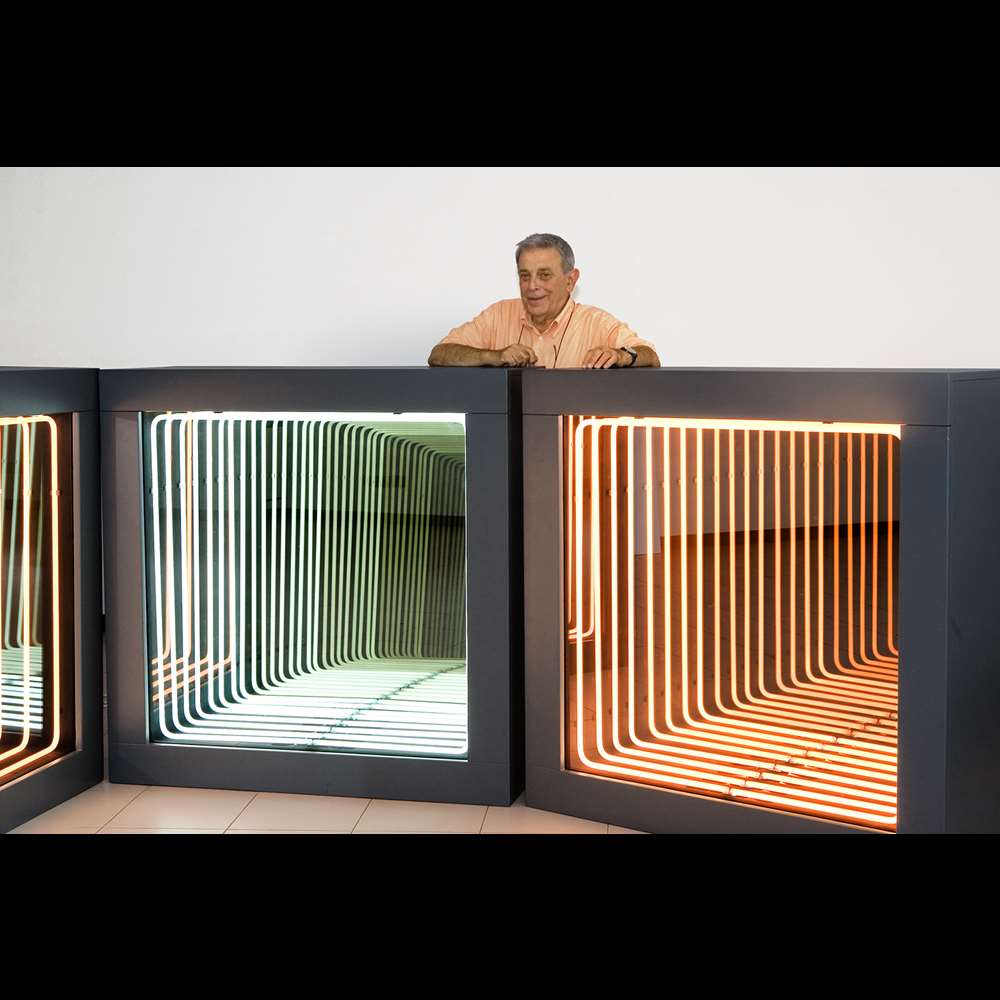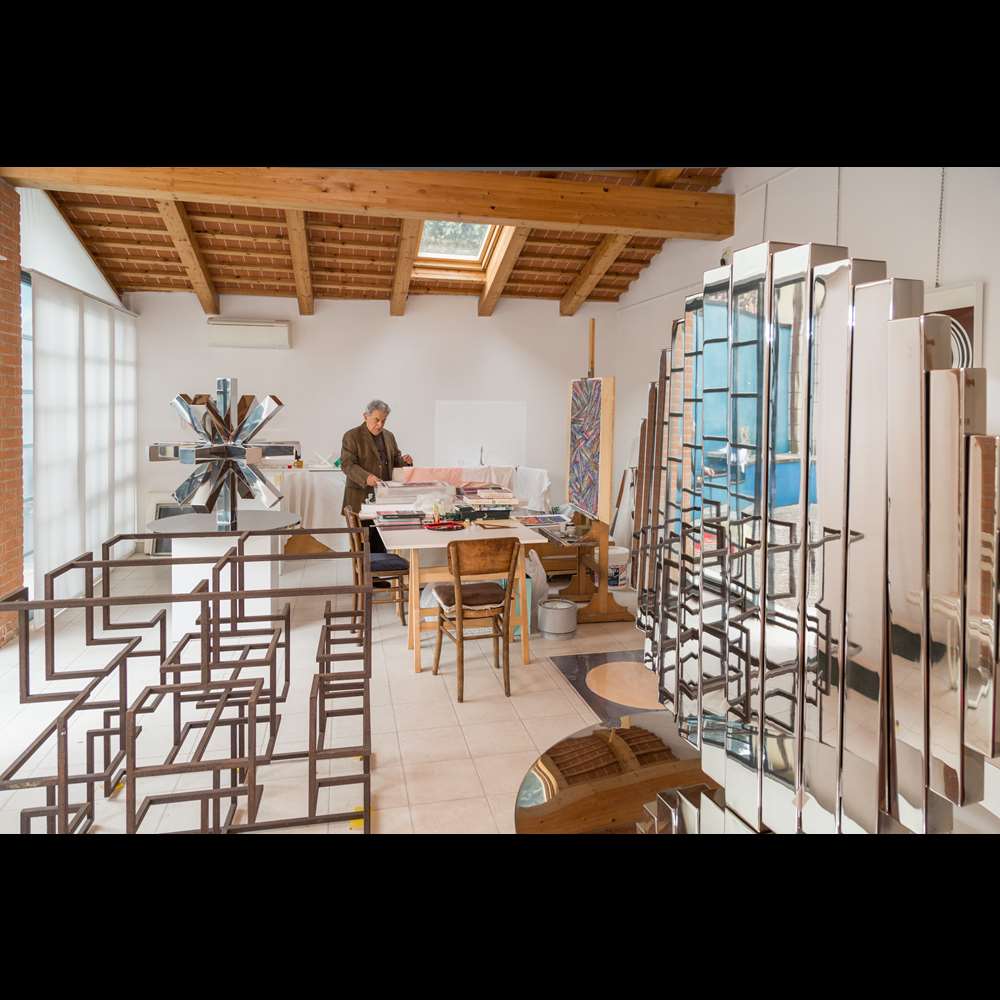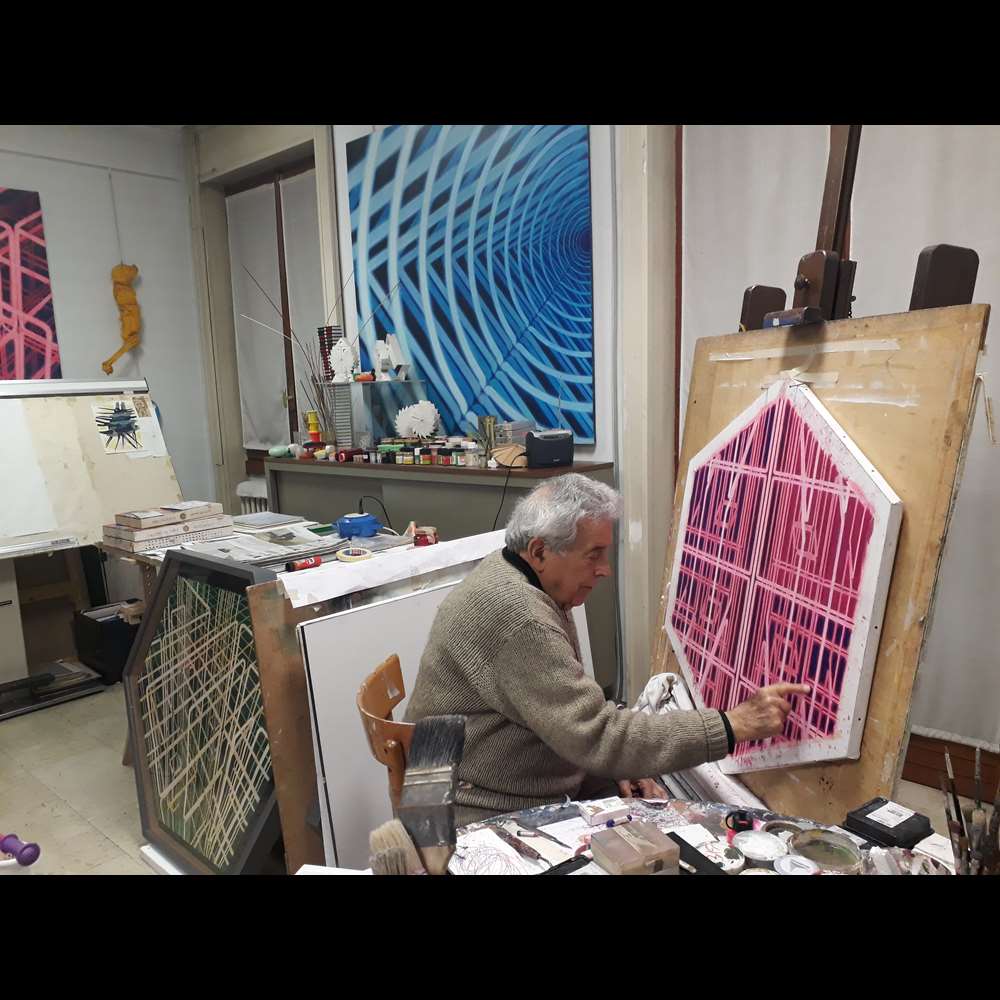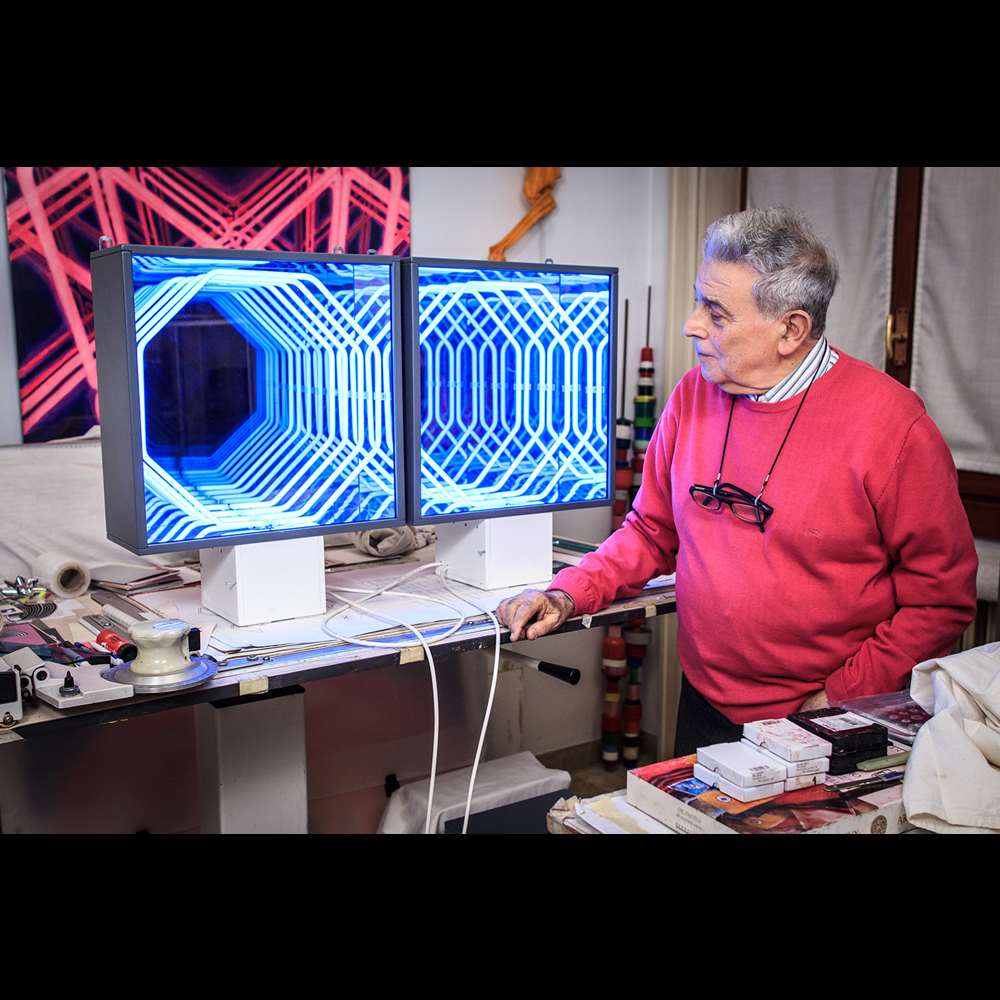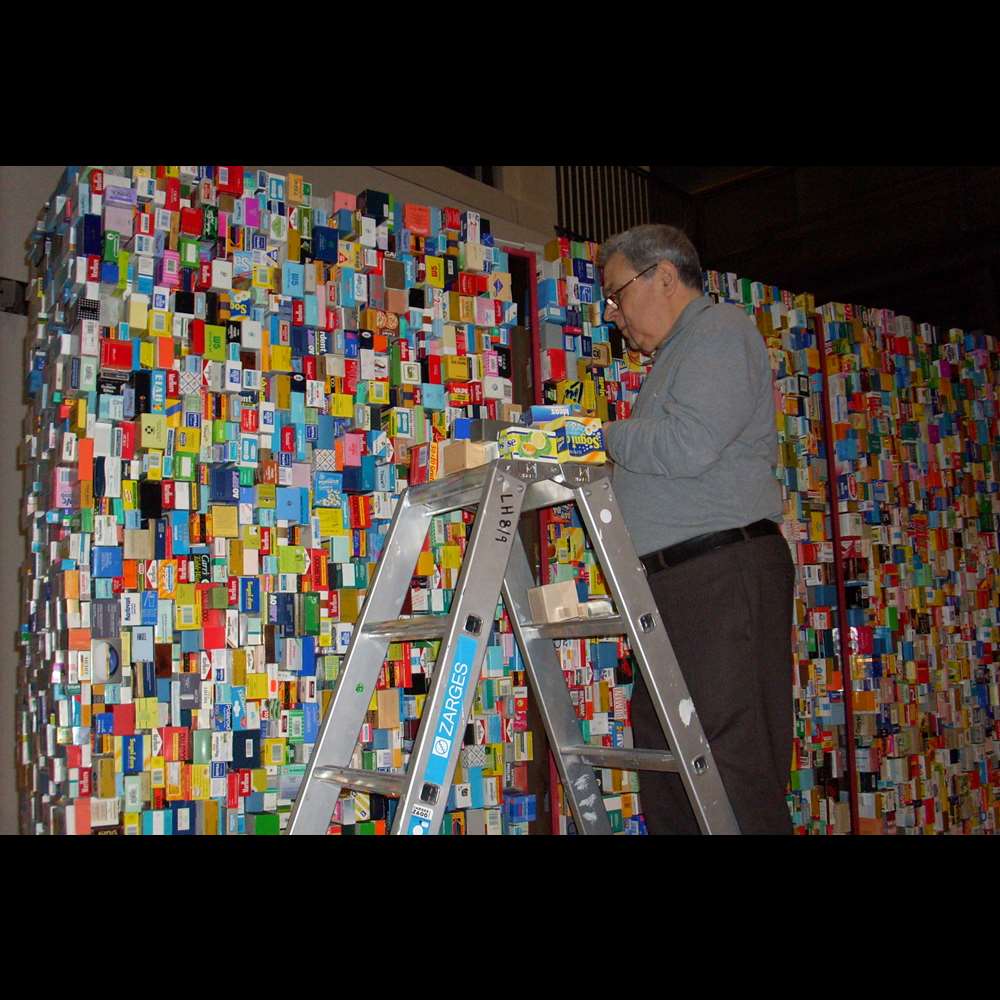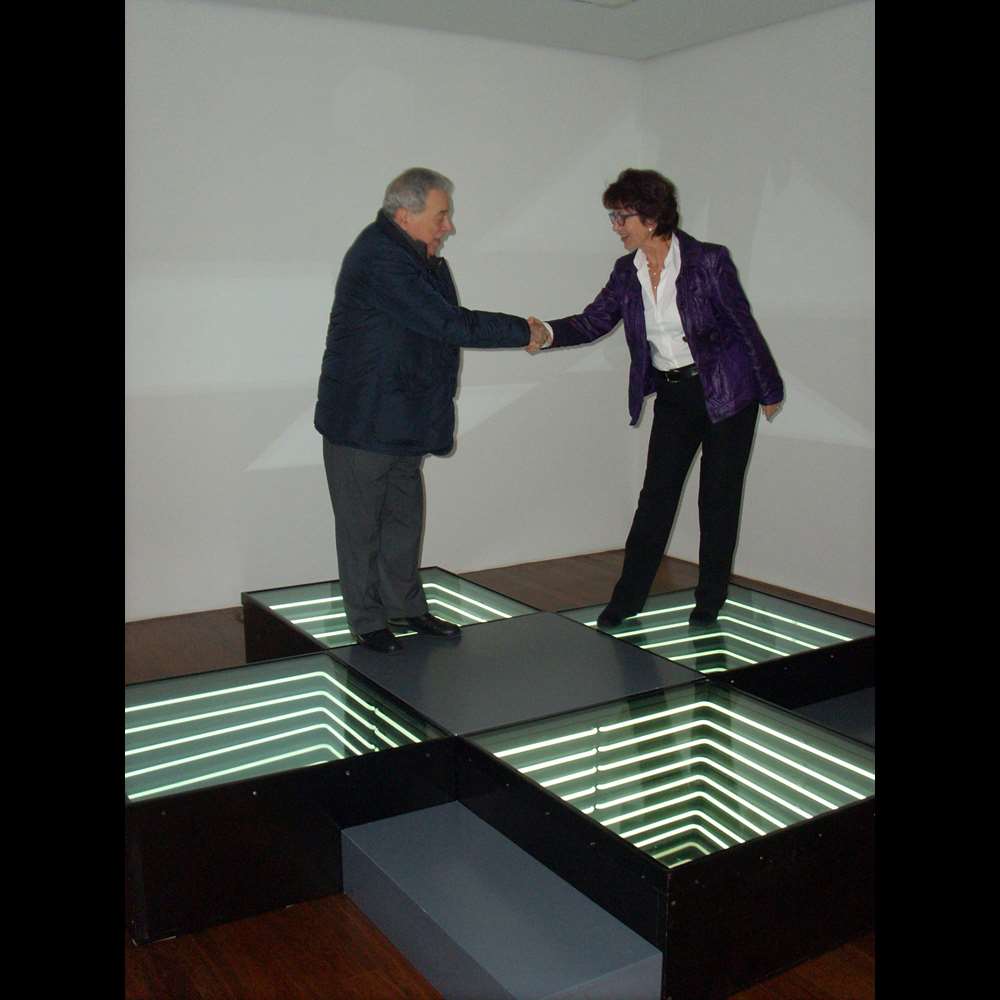-
Interview
1. What are the foundations of your research (Art Identity)?
From a problematic point of view, I have always tried to conduct my research by investigating the different levels of aesthetic reality within our technological and consumer society; with this an experimental tendency was outlined in me which led me to make an itinerary full of rigorous choices.
I felt the need to create something that could arouse curiosity and particularly attract the viewer to enter the field of reflection. In fact, an art that arises from historical and social conditions and that lives its time, can succeed in creating a new culture and a new visual communication.
Working on the psychological relativity of space and using fluorescent tubes, I create endless tunnels, hypothetical areas where the user can enjoy not only an optical effect on an aesthetic level but above all participate in the game given by light, space and time.
I turned to lights and mirrors because light can be multiplied infinitely, breaking through the three traditional dimensions. The sense of transcendence underlies these unattainable luminous depths, which converge and diverge. The infinite has always made me reflect intimately and has been the motive for my work.
2. Who are the artists who have guided you in your research?
My experiences in the aesthetic-non-objective field, oriented towards object-kinetic problems, refer to the basic values of the kineticism of the historical avant-garde, of constructivism and neoplasticism up to the most recent technological works. I have always been particularly attracted by Umberto Boccioni's Manifesto of Futurist Sculpture and by other Futurist pioneers who had theorized the possibility of using electric light in a work of art. The spatialism of Fontana, the knowledge and personal acquaintance with Bruno Munari and the abstract-concrete experiences of other aesthetic research groups (including GRAV in Paris, etc.) were also important for me.
The interest in these cultural realities prompted me to work and to try to continue, in a certain sense, the problem of my research, gradually reworking my language with the experimentation of various materials up to arrive, already in the 70s, to the realization of my plastic-spatial ideas, which I call ludoscopes.
3. Define yourself as a human being using three adjectives.
Emotional, mild and thoughtful. Eager to always give a sense of infinity, which tends beyond the human dimension.
3. According to your vision, where is contemporary art going and where would you like it to go?
Witnessing the extraordinary phenomena that are changing the face of the world, the artist today must be able to intuit new possibilities, new goals aimed at achieving a renewed humanism towards an era of new light and beauty. I therefore hope that the phenomena of our time, ready to undermine the values of the spirit, can instead reveal to us the richness of the imagination and the will to investigate in the dark. In a certain sense, the artist is privileged: from his vocation he can have the responsibility of being a prophet, of having faith, not as one who knows, but as one who seeks, who asks, in the desire to touch deeper areas , those in which a new awareness of the universe is truly elaborated, consequently finding new signs of interpretation.
TWO WORDS ABOUT HIS WORKS
Paolo Scirpa (Syracuse, 1934) lives in Milan. His work has always been aimed at an inner search outside of any bond of belonging. From the 1970s he moved from a two-dimensional iconography to the modularity of an object space that light and mirrors transform into a polyobject. His research is oriented towards a dimension in which light and space become immaterial and spectacular protagonists.
The artist is interested in representing not so much real light as "ideal" light, i.e. the idea of infinity, and for this he makes use of the means at his disposal, light tubes and mirrors. He creates the Ludoscopes, three-dimensional works that propose the perception of fictitious depths, real hyperspaces-light in which the limit between the real and the illusory is abolished. Bruno Munari also highlights the playful aspect.
His virtual spaces solicit the attention of scholars of art and science.
Over the years he also created large works of consumerist denunciation - including Consumerist Megalopolis of 1972 - of installations and paintings that are almost a two-dimensional representation of the Ludoscopes.
In the 1980s he developed his first design interventions by inserting his luminous chasms in highly prestigious architecture and environments.
For years he was present at the Salon Grands et Jeunes d'aujourd'hui in Paris; then he took part in the IX and XIII Quadrennial of Rome. He exhibits in numerous galleries and public spaces. Among these: at the San Fedele Gallery (Milan), at the Palazzo dei Diamanti (Ferrara), at the ZKM (Karlsruhe), at the Neue Galerie (Graz), at the MART in Rovereto, at the National Gallery and at the MACRO (Rome), at the Ritter (Waldenbuch), Brera Academy of Fine Arts (Milan), MACBA (Buenos Aires), MACLA (La Plata), GR Gallery (New York), MUO (Zagreb), Instituto Tomie Ohtake (Sao Paulo of Brazil), at the Oscar Niemeyer Cultural Center (Brasilia), at the Carlos Cruz Diez Foundation (Panama), at the MACA Museum of Contemporary Art (Acri, Cosenza) and recently at the Ettore Fico Museum (Turin).
Furthermore, works by him are in collections and museums, including the Museo del Novecento, the Gallerie d'Italia, the Civic Collections of Achille Bertarelli Prints at the Castello Sforzesco, the Library of the Brera Academy of Fine Arts, the MAPP (Milan ); the MAGA (Gallarate); the VAF-Stiftung of the MART of Trento and Rovereto; The National Gallery and the Farnesina Collection, contemporary art collection of the Ministry of Foreign Affairs (Rome); the Palazzo dei Diamanti (Ferrara); the MAGI Museum (Pieve di Cento, Bologna); the MACTE (Termoli); the Apollonio Umbrian Civic Museum (San Martino di Lupari, Padua); the MAC Museum of Contemporary Art "Ludovico Corrao" (Gibellina, Trapani); the Museum (Bagheria, Palermo); the Chiaramontane factories (Agrigento); the Museum Ritter (Waldenbuch) and the Musée des Beaux Arts (Caen).
He has created works for public and private spaces and churches.
His works have been included in sets and shows of various kinds, both television and theatrical: among other things, in 2015, the INDA National Institute of Ancient Drama of Syracuse entrusts him with the creation of the Manifesto of the 51st Cycle of Classical Shows and, in 2016, the Milano Musica Festival chooses its Ludoscopes to interpret the Music of the composer Gérard Grisey.
He was a professor at the Brera Academy of Fine Arts.
